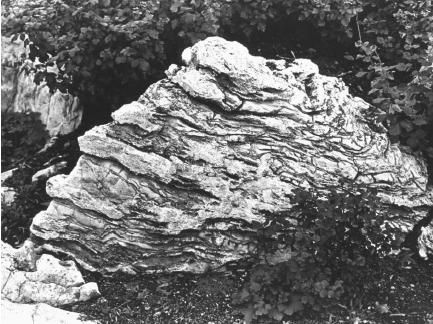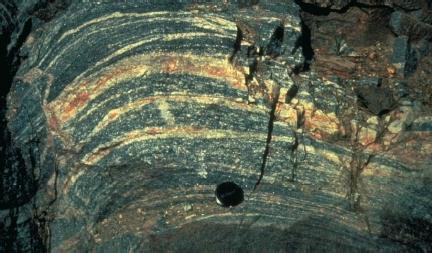Sedimentary rocks are those produced by the accumulation of sediments. These may be fine rock particles or fragments, skeletons of microscopic organisms, or minerals leached from rocks. Rock fragments and leached minerals are created through weathering, a natural process that breaks down rocks and minerals at Earth's surface into simpler materials
by physical (mechanical) or chemical means.
Wind, water, ice, gravity, temperature changes, or a combination of these are all physical actions that break down preexisting rocks. Chemical weathering represents a second stage of rock disintegration in which small pieces of rock produced by physical weathering are then further

The sediments created by weathering and the decay of organisms are then transported and deposited by wind, water, or ice. Over long periods of time, layer upon layer of sediments are deposited on top of each other and their own weight causes them to compress and harden into sedimentary rock. The horizontal layers of sedimentary rock are called strata. Common sedimentary rocks include shale, sandstone, and limestone.
Sedimentary rocks are the only rocks in which fossils can be preserved. The elevated temperatures and pressures needed to form both igneous and metamorphic rocks destroy fossils and organic remnants. The presence of fossils and the types of fossil organisms in a rock provide clues about the environment and age of sedimentary rocks. For example, fish fossils in
sedimentary rock indicate that the sediments that make up the rock were deposited in a lake, river, or marine environment. By establishing the environment of the fossils in a rock, scientists learn more about the conditions under which the rock formed.

0 comment/s:
Post a Comment